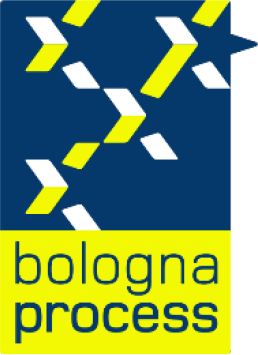School of Applied Sciences
Course Details

KTO KARATAY UNIVERSITY
School of Applied Sciences
Programme of School of Applied Sciences
Course Details
School of Applied Sciences
Programme of School of Applied Sciences
Course Details

| Course Code | Course Name | Year | Period | Semester | T+A+L | Credit | ECTS |
|---|---|---|---|---|---|---|---|
| 04081008 | Accident Investigation Analysis | 4 | Spring | 8 | 3+0+0 | 5 | 5 |
| Course Type | Elective |
| Course Cycle | Bachelor's (First Cycle) (TQF-HE: Level 6 / QF-EHEA: Level 1 / EQF-LLL: Level 6) |
| Course Language | Turkish |
| Methods and Techniques | - |
| Mode of Delivery | Face to Face |
| Prerequisites | - |
| Coordinator | - |
| Instructor(s) | Lect. Dr. Kamile YASDIMAN |
| Instructor Assistant(s) | - |
Course Instructor(s)
| Name and Surname | Room | E-Mail Address | Internal | Meeting Hours |
|---|---|---|---|---|
| Lect. Dr. Kamile YASDIMAN | A-302 | [email protected] | 7463 |
Course Content
1. Historical accounts of accidents that occurred in the past which are contributory to betterment of select aviation safety systems. Management Systems. 12. Search and Rescue Operations.
Objectives of the Course
In this course, an in depth analysis of accident environment with particular emphasis on the protection of occupants will be done. The injury machanism and causes will be analyzed, as will the physics and kinematics of the impact sequence. The intent of the course is to familiarize the student with what can be done to minimize the effects of an accident.
Contribution of the Course to Field Teaching
| Basic Vocational Courses | |
| Specialization / Field Courses | X |
| Support Courses | |
| Transferable Skills Courses | |
| Humanities, Communication and Management Skills Courses |
Relationships between Course Learning Outcomes and Program Outcomes
| Relationship Levels | ||||
| Lowest | Low | Medium | High | Highest |
| 1 | 2 | 3 | 4 | 5 |
| # | Program Learning Outcomes | Level |
|---|---|---|
| P7 | To have the ability to analyze data and interpret graphs. | 3 |
| P11 | To know aviation safety and human factors. | 5 |
| P13 | To demonstrate the application of human physiology and crew performance knowledge in operational problem-solving scenarios under challenging conditions. | 4 |
Course Learning Outcomes
| Upon the successful completion of this course, students will be able to: | |||
|---|---|---|---|
| No | Learning Outcomes | Outcome Relationship | Measurement Method ** |
| O1 | Clean and prepare data from different sources for analysis. | P.7.4 | 1 |
| O2 | Design complex graphs and visualizations based on the analysis results. | P.7.5 | 1 |
| O3 | Defines the basic principles of aviation safety and security-related terms. | P.11.1 | 1 |
| O4 | Explains strategies for managing human factors to improve aviation safety. | P.11.5 | 1 |
| O5 | Analyzes past aviation safety incidents to examine the role of human factors. | P.11.6 | 1 |
| O6 | Explains how human physiology changes under challenging conditions. | P.13.3 | 1 |
| ** Written Exam: 1, Oral Exam: 2, Homework: 3, Lab./Exam: 4, Seminar/Presentation: 5, Term Paper: 6, Application: 7 | |||
Weekly Detailed Course Contents
| Week | Topics |
|---|---|
| 1 | Historical accounts of accidents that occurred in the past which are contributory to betterment of select aviation safety systems. |
| 2 | Historical accounts of accidents that occurred in the past which are contributory to betterment of select aviation safety systems. |
| 3 | Basic and complex aircraft parts. Introduction on safety and the regulatory framework of local and foreign aviation organizations |
| 4 | Known accidents. |
| 5 | Known accidents. |
| 6 | Accident Causes. |
| 7 | Midterm Exam |
| 8 | Local and International Investigations. Accident Photography Accident Diagrams. |
| 9 | Local and International Investigations. Accident Photography Accident Diagrams. |
| 10 | Interviewing the witnesses. |
| 11 | Writing and construction of accident reports. |
| 12 | Security management systems. |
| 13 | Search and rescue operations. |
| 14 | Search and rescue operations. |
| 15 | Preparations to the Final Exam. |
Textbook or Material
| Resources | Primo, R. The Plane Truth: Airline Crashes, the media, and Transportation Policy. Brookings, 2003. |
| Primo, R. The Plane Truth: Airline Crashes, the media, and Transportation Policy. Brookings, 2003. |
Evaluation Method and Passing Criteria
| In-Term Studies | Quantity | Percentage |
|---|---|---|
| Attendance | - | - |
| Practice | - | - |
| Field Study | - | - |
| Homework | - | - |
| Presentation | - | - |
| Projects | - | - |
| Quiz | - | - |
| Midterms | 1 | 40 (%) |
| Final Exam | 1 | 60 (%) |
| Total | 100 (%) | |
ECTS / Working Load Table
| Quantity | Duration | Total Work Load | |
|---|---|---|---|
| Course Week Number and Time | 14 | 3 | 42 |
| Out-of-Class Study Time (Pre-study, Library, Reinforcement) | 14 | 5 | 70 |
| Midterms | 1 | 14 | 14 |
| Quiz | 0 | 0 | 0 |
| Homework | 0 | 0 | 0 |
| Practice | 0 | 0 | 0 |
| Laboratory | 0 | 0 | 0 |
| Project | 0 | 0 | 0 |
| Workshop | 0 | 0 | 0 |
| Presentation/Seminar Preparation | 0 | 0 | 0 |
| Fieldwork | 0 | 0 | 0 |
| Final Exam | 1 | 24 | 24 |
| Other | 0 | 0 | 0 |
| Total Work Load: | 150 | ||
| Total Work Load / 30 | 5 | ||
| Course ECTS Credits: | 5 | ||
Course - Learning Outcomes Matrix
| Relationship Levels | ||||
| Lowest | Low | Medium | High | Highest |
| 1 | 2 | 3 | 4 | 5 |
| # | Learning Outcomes | P7 | P11 | P13 |
|---|---|---|---|---|
| O1 | Clean and prepare data from different sources for analysis. | 4 | - | - |
| O2 | Design complex graphs and visualizations based on the analysis results. | 4 | - | - |
| O3 | Defines the basic principles of aviation safety and security-related terms. | - | 5 | - |
| O4 | Explains strategies for managing human factors to improve aviation safety. | - | 5 | - |
| O5 | Analyzes past aviation safety incidents to examine the role of human factors. | - | 5 | - |
| O6 | Explains how human physiology changes under challenging conditions. | - | - | 3 |
